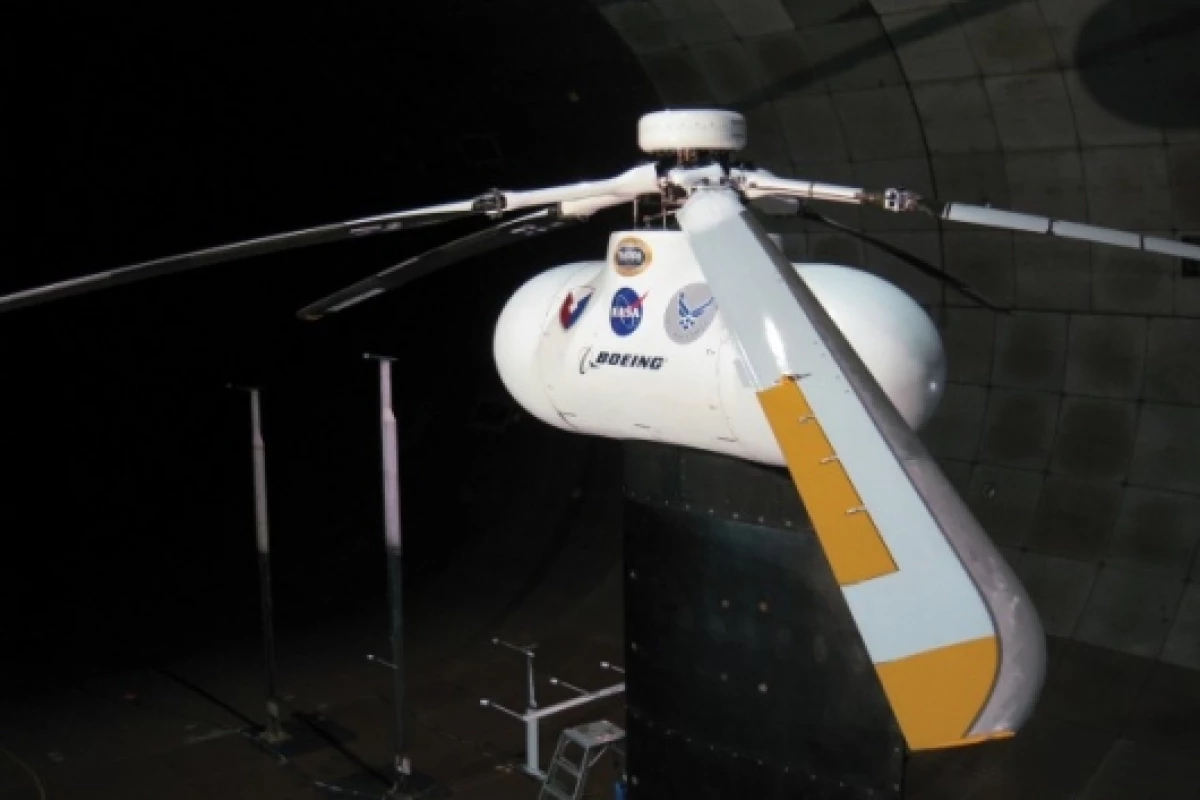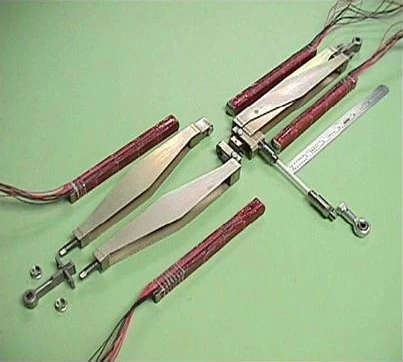March 27, 2009 Can you imagine a world full of large, relatively quiet rotorcraft making short hops between cities such as New York and Washington, carrying as many as 100 passengers at a time in comfort and safety? This, amongst other technological improvements, would require helicopters with greatly improved rotor blade efficiency, allowing them to travel much quieter, smoother and further with the same amount of fuel. NASA is currently conducting research in their wind tunnels on the SMART rotor hub, which has rotor blades made with shape-changing materials that could one day make this scenario a reality.
The SMART helicopter
Helicopters today are considered a loud and bumpy mode of domestic transport and best reserved for medical emergencies, traffic reporting and hovering over celebrity weddings. Routine transportation by rotorcraft could help ease air traffic congestion around the nation's airports, but noise and vibration must be reduced significantly before the public can embrace the idea according to Jim Banke, NASA Aeronautics Research Mission Directorate. Jim goes on to say that the solution could lie in rotor blades made with piezoelectric materials that flex when subjected to electrical fields, not unlike the way human muscles work when stimulated by a current of electricity sent from the brain.
Helicopter rotors rely on passive designs, such as the blade shape, to optimize the efficiency of the system. In contrast, an airplane's wing has evolved to include flaps, slats and even the ability to change its shape in flight. NASA researchers and others are attempting to incorporate the same characteristics and capabilities in a helicopter blade.
NASA and the Defense Advanced Research Projects Agency (DARPA), the U.S. Army, and Boeing have spent the past decade experimenting with smart material actuated rotor, or SMART, technology, which includes the piezoelectric materials.
"SMART rotor technology holds the promise of substantially improving the performance of the rotor and allowing it to fly much farther using the same amount of fuel, while also enabling much quieter operations," said William Warmbrodt, chief of the Aeromechanics Branch at NASA's Ames Research Center in California, .
SMART Rotor Tests
In a partnership between the SMART Rotor team and the U.S. Air Force, a rotor using piezoelectric actuators to drive the trailing edge flaps was tested in a 40 x 80-foot tunnel in 155-knot wind to simulate conditions the rotor design would experience in high-speed forward flight. The rotor also was tested at cruise speed conditions of 124 knots to determine which of three trailing edge flap patterns produced the least vibration and noise. One descent condition also was tested. Results showed that the SMART Rotor can reduce by half the amount of noise it puts out within the controlled environment of the wind tunnel, reported NASA. The ultimate test of SMART rotor noise reduction capability would come from flight tests on a real helicopter, where the effects of noise that reproduces through the atmosphere and around terrain could be evaluated as well. NASA says the test data will also help future researchers use computers to simulate how differently-shaped SMART Rotors would behave in flight under various conditions of altitude and speed.
David Greig
Via NASA





